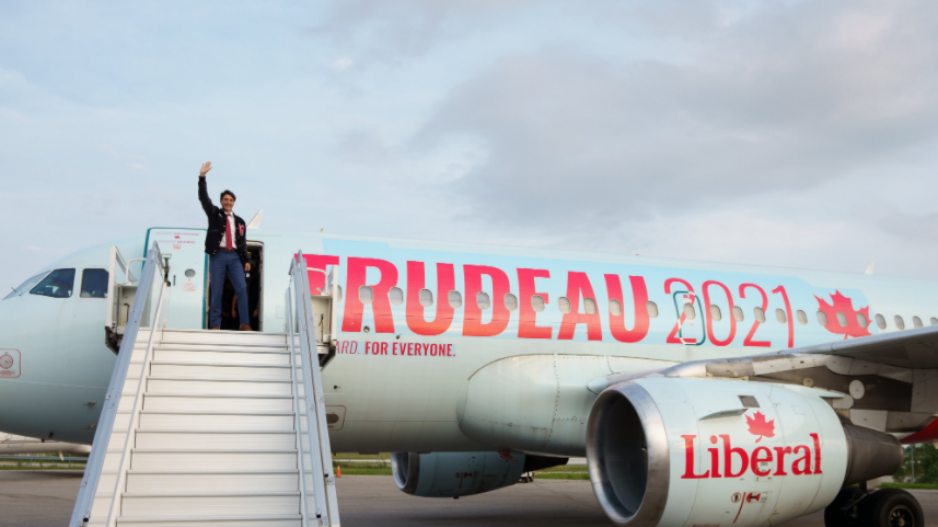The past few days have provided more opportunities for speculation about an early federal election in Canada.
Topics such as foreign interference and the type of people who some of our members of Parliament choose to meet dominated the airwaves. In any case, a supply and confidence agreement is firmly in place in Ottawa, and the latest events have not catapulted any party to a sizable lead.
When Research Co. and Glacier Media asked Canadians about their behaviour if they were asked to cast a ballot tomorrow, there was no clear frontrunner. The two main political organizations in Canada are in a statistical tie among decided voters, with the Liberal Party at 34 per cent (up three points since October) and the Conservative Party at 33 per cent (down two points).
There is little momentum for the New Democratic Party (NDP) (18 per cent, down one point), the Bloc Québécois (eight per cent, unchanged), the Green Party (three per cent, down one point) and the People’s Party (one per cent, down one point).
The Liberals have managed to climb back this month on account of their superior performance in two provinces: Ontario (39 per cent, with the Conservatives at 34 per cent) and Quebec (39 per cent, with the Bloc at 29 per cent). The Conservatives continue to dominate in Alberta (58 per cent), Saskatchewan and Manitoba (48 per cent) and British Columbia (38 per cent).
The approval rating for Prime Minister and Liberal Party leader Justin Trudeau improved slightly from 44 per cent in October to 46 per cent this month. On this indicator, there is also growth for Official Opposition and Conservative Party leader Pierre Poilievre (41 per cent, up four points) and NDP leader Jagmeet Singh (49 per cent, up three points).
Elizabeth May starts her new tenure as leader of the Green Party with an approval rating of 32 per cent, 10 points higher than the numbers posted by Amita Kuttner in October. People’s Party leader Maxime Bernier, out of parliament but still with plenty to say on social media, checks in at 15 per cent (down two points).
The nationwide drop in Conservative Party support is accompanied by a noticeable shift in the preferred prime minister question. Poilievre is the first choice of 25 per cent of Canadians to oversee the federal government (up one point), while Trudeau remains in first place with 35 per cent (up five points). Singh is a distant third at 15 per cent (down two points).
When Canadians are asked about the most important issue facing the country today, the economy and jobs (26 per cent, down three points), health care (also 26 per cent, up five points) and housing, homelessness and poverty (21 per cent, unchanged) are the only ones in double digits.
The increase observed on health care is understandable against the backdrop of funding discussions among the federal government and its provincial counterparts. Canadians aged 55 and over are more likely to be primarily concerned about medical services now (34 per cent) than in October (29 per cent). This group – whose turnout can define electoral outcomes – is currently favouring the Liberals (36 per cent) over the Conservatives (33 per cent).
This month, the proportion of Canadians who say they are satisfied with what the Liberals and the NDP have accomplished since their March 2022 agreement increased by three points to 47 per cent. We continue to see Liberal voters captivated by the supply and confidence deal (79 per cent), but satisfaction stands at 59 per cent among NDP voters. Put differently, 32 per cent of NDP supporters from 2021 expect more from this partnership.
With the economy and jobs staying at the top of the issue landscape, the perceptions of Canadians on the capabilities of the two main leaders are stagnant. We see 44 per cent of Canadians (up one point) saying they are comfortable with Trudeau being in charge of the national economy and 40 per cent (also up one point) saying they would be comfortable with Poilievre taking the reins.
The past four months have done little to sway Canadians on the purported economic failures of the current head of government or the promise of brighter days from the person seeking the top job. It remains to be seen if the latest news will turn into quagmires for the government or the opposition. A couple of decades ago, the so-called “Sponsorship Scandal” percolated slowly and had an impact on two federal elections.
Our latest survey does offer a small dose of good news for the two main parties. The Liberals can take solace in the fact that more Canadians look at Trudeau as the best person to run the government, even if the national average is heavily boosted by Ontarians and Quebecers. The Conservatives have confirmed their dominance in Western Canada and may celebrate the fact that some voters went from “undecided” to “approve” when asked to think of Poilievre.
Mario Canseco is president of Research Co.
Results are based on an online study conducted from Feb. 25-27, 2023, among 1,000 adults in Canada. The data has been statistically weighted according to Canadian census figures for age, gender and region. The margin of error – which measures sample variability – is plus or minus 3.1 percentage points, 19 times out of 20.




